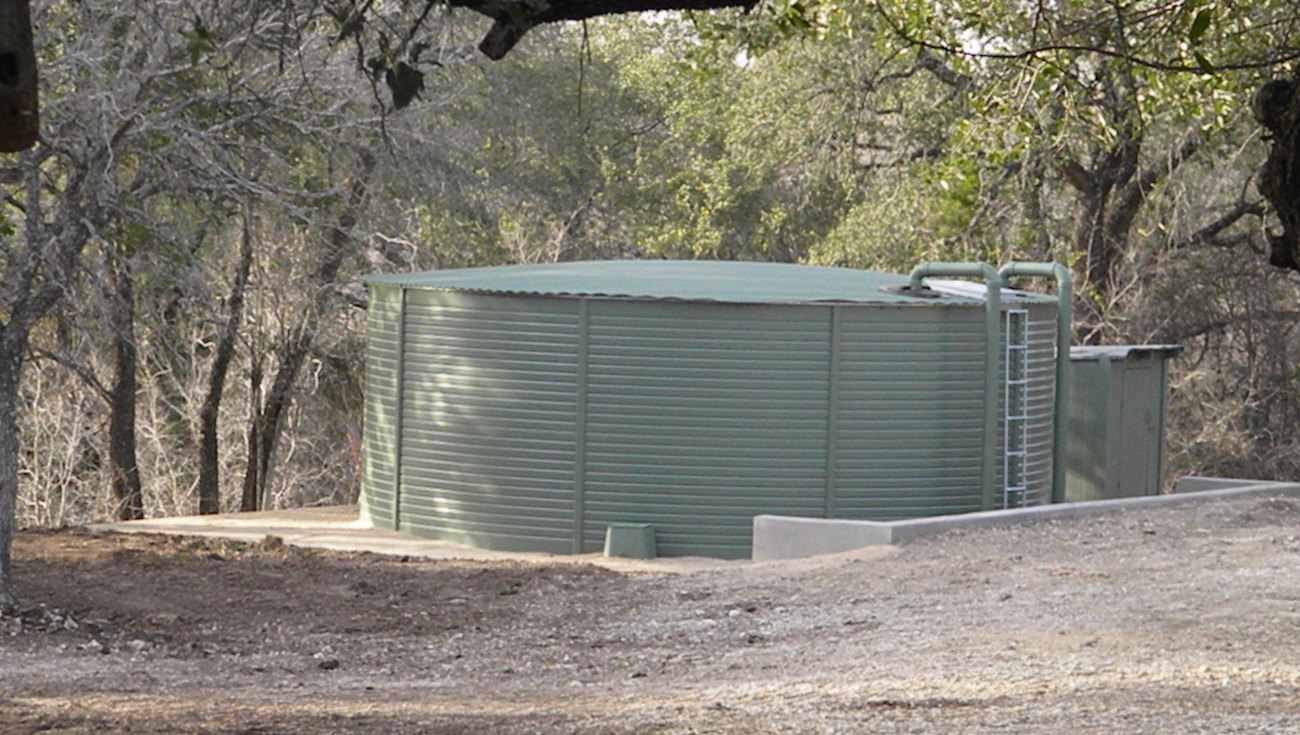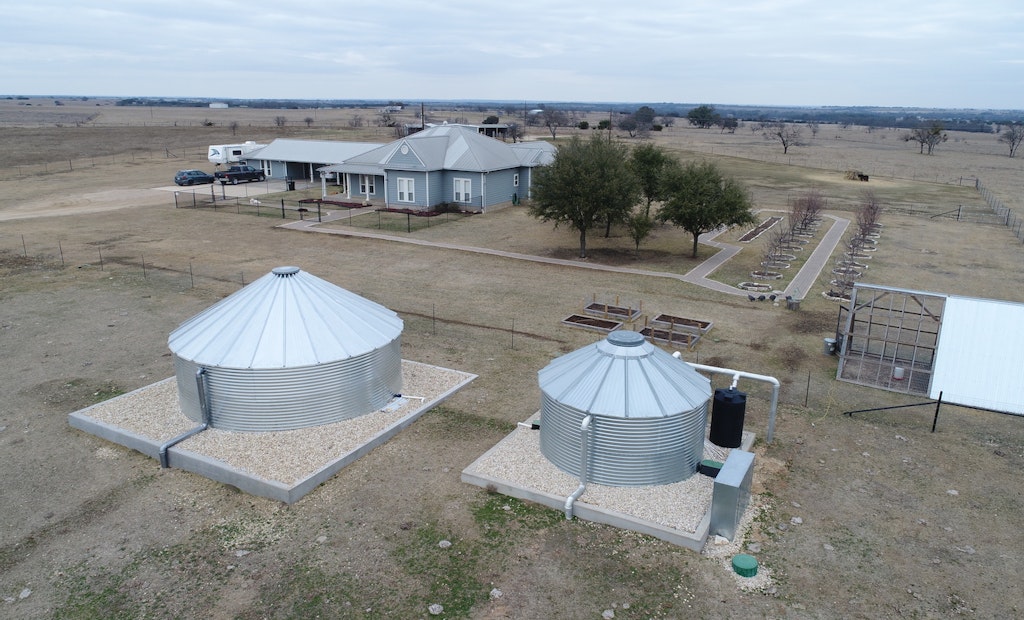In a historically dry area like Texas — known to have lengthy droughts — capturing and using rainwater just makes sense. That’s why it’s not uncommon for citizens and companies alike to take steps to collect the precious commodity.
Luke Snyder, owner of JerNan Septic and Rainwater Solutions, added rainwater collection to his services, and his company name, about 10 years ago.
“Since aerobic treatment systems reclaim water, capturing runoff from roofs fit right in,” says Snyder, an onsite installer from Waco, Texas. He is also an accredited rainwater professional and inspection specialist through the American Rainwater Catchment Systems Association, or ARCSA.
“The big focus and the big picture is that we would hope as we move forward and as water becomes an even greater issue — the cost of water is rising — we hope there will be a point in time when almost every time we install a septic, we install a rainwater system,” Snyder says.
He’s not quite there yet. About 90% of his business is septic installing, repair and maintenance for residential and commercial clients. Still, that 10% in rainwater is a segment he’s happy to have.
“We’re not worried about it being our primary source of business, but we like being able to offer it. It’s really hit or miss. We have some years where we’ll do four or five; some years, we do only one.”
Snyder began designing rainwater systems after educating himself through association membership and taking coursework through the ARCSA.
“I knew about the technology, and I knew it was being done in other places, but there was nobody here doing it. I felt like especially with our focus, it was a natural piggyback to what we were already doing.”
The process of installing a rainwater system is not much different from installing septic systems, he says, which made it a natural addition to his offerings. However, “the majority of rainwater tanks are above ground vs. below ground.”
Most of the rainwater systems he’s installed have been to new clients, not current septic customers. So that has helped spread the word about the value and sustainability of rainwater catchment systems.
“It is a lot of money for a homeowner,” Snyder admits. “My experience has been, for the vast number of people I’m installing it for, it almost appears to be a status symbol. They want to be seen as doing something good for the environment.
“But I am also certified as an inspection specialist. If somebody has one at their house and they sell their house, obviously rainwater systems have to be inspected at transfer of the real estate title.”
Learning the ropes
Becoming an accredited rainwater professional doesn’t happen overnight. “It requires a couple of years’ experience,” says Heather Kinkade, executive director of the ARCSA.
Because those in the septic and plumbing industries are familiar with piping, excavating and other associated skills, she says those operators are likely candidates to add rainwater to their offerings.

“It’s really becoming a bit more mainstream now that we have a third-party certification.” ARCSA now offers three separate certifications for rainwater catchment designers, installers and inspectors; the certifications are offered through the American Society of Safety Engineers.
“We’ve taken our program and fashioned it to fit their requirements,” says Kinkade, noting that certifications need to be updated every three years.
Expanding services
Snyder’s long-range plan is to expand his business even more, offering rainwater harvesting, remediation and onsite installations, landscaping, irrigation and drainage consultation.
For Snyder, it’s been a beneficial added service. But it’s not something every septic operator should necessarily undertake. “It’s going to depend what marketplace they’re in. Location is a big factor; in Texas, we’re pretty water rich,” he says. However, “as you migrate to different areas of the state, that aren’t as water rich, there are a lot more rainwater systems.
“If you’re geared toward economics, then this is probably not a market you want to put your toe in.”
Snyder, who teaches a water conservation/rainwater harvesting course at McLennan Community College, designs water catchment systems as well.
“It’s a learning curve before I even sit down and design them. For me to size it properly, I have to sit down and spend a lot of time with it,” he says.
He does a fair number of estimates for rainwater systems — many more than the number of systems he actually installs. Customers may think the idea of a system is good and environmentally sound, but they may not be able to justify the expense — which could be about $40,000 for a catchment system to provide potable water.
But if a customer does decide to go with a system, Snyder will not design and install a bargain system. “I’m geared toward quality in the first place,” he says.
“I took that business model and transferred it to the rainwater business. I’m not going to cut corners.”






